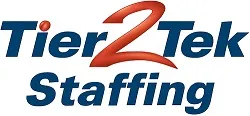VMWare Interview Questions with Answers

In the ever-evolving landscape of virtualization technology, VMWare remains a pivotal player. At Tier2Tek Staffing, we understand the importance of ensuring that both hiring managers and job seekers are equipped with the right knowledge to navigate the complexities of VMWare environments. Below are essential technical interview questions designed to assess and demonstrate proficiency in VMWare, tailored for clarity and precision to aid in the recruitment process.
Explain the different types of virtualization available with VMware.
VMware offers several types of virtualizations including server, network, and desktop virtualization. Server virtualization allows multiple operating systems to run on a single physical server as highly efficient virtual machines. Network virtualization abstracts networking operations from the underlying hardware into a virtual setup. Desktop virtualization enables centralized management of desktops through a virtual desktop infrastructure.
What is vSphere?
vSphere is VMware’s cloud computing virtualization platform. It includes facilities for virtualization, management, and interface layers that enable scalable and aggregated virtual infrastructure management.
Discuss the role of ESXi in VMware.
ESXi is an enterprise-class, type-1 hypervisor developed by VMware for deploying and serving virtual computers. It is a crucial component that allows multiple instances of operating systems to share a single hardware host.
What is VMkernel?
VMkernel is the core of the ESXi server that interfaces with physical hardware, such as CPU, memory, storage, and networking. It manages system resources efficiently and fairly by managing the execution of VMs.
How does vMotion work?
vMotion allows you to move an entire running virtual machine from one physical server to another, without downtime. The active memory and precise execution state of the virtual machine are rapidly transmitted over a high-speed network, which allows the process to be seamless and continuous.
Explain the purpose of VMware DRS.
Distributed Resource Scheduler (DRS) dynamically balances computing workloads with available resources in a virtualized environment. It adjusts resources among various hosts under one resource pool automatically or through manual settings.
What is a snapshot in VMware?
A snapshot preserves the state and data of a virtual machine at a specific point in time. Snapshots can be used for backups or to restore a VM to a particular state.
Describe VMware HA.
High Availability (HA) provides easy to use, cost-effective high availability for applications running in virtual machines. In the event of server failure, affected VMs are automatically restarted on other production servers with spare capacity.
What is the difference between a clone and a template in VMware?
A clone is a copy of an existing virtual machine. A template, on the other hand, is a master copy of a VM that can be used to create and provision new VMs quickly.
How are patches managed in VMware environments?
Patches in VMware environments are managed through the Update Manager, which automates patching and updates for ESXi hosts, virtual machines, and vApps.
Explain what a vApp is.
A vApp is a container in vSphere that holds one or more virtual machines. It helps manage and configure multi-tiered applications, combining multiple VMs into a single entity.
What is the use of a datastore in VMware?
A datastore is a storage entity in VMware that provides a place for storing virtual machine files, templates, and ISO images.
How does VMware handle network isolation?
Network isolation in VMware can be achieved through various methods, including VLAN tagging and private VLANs, which segregate virtual machine traffic on a network.
Describe the role of VMware Tools.
VMware Tools is a suite of utilities that enhances the performance of the virtual machine’s guest operating system and improves management of the VM.
What are virtual switches in VMware?
Virtual switches connect virtual machines to each other and to the physical network. They provide VMs with network connectivity and integrate with physical switches to manage data traffic.
Explain the concept of resource pools in VMware.
Resource pools allow you to manage and allocate CPU and memory resources among multiple virtual machines. They help optimize the distribution of resources within a cluster.
What is VMware NSX?
VMware NSX is a network virtualization and security platform that delivers the operational model of a virtual machine for the network. It enables the creation of entire networks in software and embeds them in the hypervisor layer.
How does Fault Tolerance work in VMware?
Fault Tolerance provides continuous availability for applications in the event of server failures by creating a live shadow instance of a VM that is always up-to-date with the primary VM.
What are affinity and anti-affinity rules?
Affinity rules are settings that establish relationships between virtual machines and hosts. Anti-affinity rules ensure that specified VMs do not run on the same host simultaneously.
How does Storage DRS improve VMware functionality?
Storage DRS enhances storage resource management by dynamically balancing storage capacity and I/O load within a storage cluster.
What is VMware vSAN?
vSAN is VMware’s HCI (hyper-converged infrastructure) solution, which pools direct-attached storage devices across a VMware vSphere cluster to create a shared datastore for virtual machines.
How do you secure a VMware environment?
Securing a VMware environment involves multiple strategies such as implementing role-based access control, using firewalls and antivirus solutions, and ensuring physical security of the hardware.
What is the difference between thick provision and thin provision?
Thick provisioning allocates storage space upfront and in full for the virtual disk. Thin provisioning, on the other hand, allocates storage space dynamically as data is added to the VM.
Explain the concept of Linked Clones.
Linked Clones are copies of virtual machines that share virtual disks with the parent VM to conserve disk space while allowing each clone to have its own unique settings and software.
How can you monitor the performance of a VMware environment?
Performance in a VMware environment can be monitored using tools like vCenter Server, ESXTOP, and third-party solutions that provide insights into VM, host, and network performance.
What are the benefits of using VMware vRealize Operations?
vRealize Operations helps manage the health, capacity, and performance of IT services across heterogeneous and hybrid cloud environments. It optimizes efficiency and ensures performance by using predictive analytics.
What is a Content Library in VMware?
A Content Library in VMware is a repository that provides simple and effective management for VM templates, vApps, ISO images, and scripts. It supports storing and sharing content across vCenter Server instances in a centralized manner.
Describe the update process for ESXi hosts.
The update process for ESXi hosts typically involves using VMware Update Manager to apply patches and updates systematically, ensuring minimal downtime and maintaining system integrity.
What is VMware vCenter Server?
VMware vCenter Server is a centralized platform for managing VMware vSphere environments, allowing automation and delivery of a virtual infrastructure across the enterprise.
Explain the importance of vSphere Lifecycle Manager.
vSphere Lifecycle Manager provides a simplified and streamlined method to manage software lifecycles for ESXi hosts, ensuring that they are consistent, up-to-date, and compliant with the desired state configurations.
What is a VMDK file?
A Virtual Machine Disk (VMDK) file is a format specification for virtual machine disk files used by VMware products, serving as the primary format for storing VM data.
How does VMware ensure data protection and recovery?
VMware offers data protection and recovery solutions through its native VMware vSphere Data Protection feature and third-party software integrations, focusing on backup and recovery of VM data.
What are the different types of network adapters in VMware?
VMware supports several types of virtual network adapters including VMXNET, E1000, and E1000e. Each type provides different performance benefits and compatibility with various operating systems.
Explain VMware vShield Zones.
VMware vShield Zones is a security tool that provides more granular control over network traffic between virtual machines, enhancing security within a vSphere environment.
What is the role of VMware Converter?
VMware Converter is a utility that facilitates the conversion of physical machines and formats of other virtual machines into VMware virtual machines, enabling easy integration into the VMware environment.
How do you manage scalability in a VMware environment?
Managing scalability in VMware environments can be achieved through features like Auto-Deploy, which simplifies the deployment of ESXi hosts, and Host Profiles, which provide scalable configuration management.
What is the purpose of VMware Horizon?
VMware Horizon is a platform for virtual desktop and application virtualization, allowing users to access their personal desktop environments and applications from any device, anywhere.
Discuss the benefits of VMware Cloud on AWS.
VMware Cloud on AWS integrates VMware’s enterprise-class Software-Defined Data Center software with the scalable, flexible, and cost-effective AWS Cloud, providing a seamless hybrid environment for running applications.
What is the VMware NSX-T Data Center?
VMware NSX-T Data Center is designed for networking and security management across environments, including VMware vSphere, KVM, and multi-cloud setups (AWS, Azure), focusing on advanced multi-hypervisor and container support.
Explain the significance of VMware vRealize Automation.
vRealize Automation automates the provisioning of multi-cloud infrastructures and applications, enhancing IT agility and streamlining operations across diverse cloud environments.
How can VMware vSphere be used to improve server consolidation?
vSphere improves server consolidation by allowing multiple virtual machines to operate on single physical servers, significantly reducing hardware requirements while optimizing resource utilization.
Describe the interoperability between VMware and other cloud services.
VMware offers various solutions like VMware Cloud Foundation and VMware Tanzu, which help in building integrated and interoperable cloud infrastructures with services like AWS, Microsoft Azure, and Google Cloud Platform.
Common Technologies Used in VMware

VMware utilizes a range of technologies to deliver comprehensive virtualization and cloud computing solutions. These include:
- ESXi: A bare-metal hypervisor that installs directly on server hardware.
- vSphere: A suite that provides a robust platform for virtualization management.
- vCenter Server: Centralized management for vSphere environments.
- VMware NSX: Network virtualization and security platform.
- VMware vSAN: Hyper-converged infrastructure solution that pools direct-attached storage devices across a VMware vSphere cluster.
- VMware Horizon: Provides virtual desktop and application virtualization.
- VMware vRealize Suite: Offers operations management and automation across physical, virtual, and cloud environments.
- VMware vMotion: Allows live migration of running virtual machines without downtime.
- VMware DRS (Distributed Resource Scheduler): Automatically balances computing workloads with available resources.
- VMware HA (High Availability): Ensures minimized downtime and continuous availability of applications.
Key Expertise in VMware Environments
Expertise in VMware encompasses a variety of specialized skills and knowledge areas critical for effectively managing and deploying VMware solutions:
- Virtualization: Proficiency in using VMware tools like ESXi and vSphere for creating and managing virtual machines.
- Network Configuration: Skills in configuring and managing virtual networks using VMware NSX and understanding network virtualization concepts.
- Storage Management: Knowledge of configuring and optimizing VMware vSAN and other storage solutions integrated with VMware environments.
- Data Center Management: Ability to manage and optimize data centers using VMware vCenter Server and VMware vRealize Operations.
- Security: Understanding of VMware security tools and best practices, including securing virtual environments and managing identity and access controls.
- Disaster Recovery and Business Continuity: Skills in implementing VMware Site Recovery Manager and other tools to ensure high availability and disaster recovery.
- Automation and Orchestration: Expertise in automating workflows using VMware vRealize Automation to increase efficiency and reduce manual tasks.
- Performance Tuning: Ability to monitor, troubleshoot, and optimize the performance of VMware environments.
- Cloud Integration: Skills in integrating and managing hybrid cloud environments using VMware Cloud on AWS and other platforms.
Need to Hire VMware Experts?

If you’re looking to expand your team with skilled VMware professionals, Tier2Tek Staffing can connect you with top-tier talent. We specialize in quickly identifying and recruiting experts in VMware technologies.
